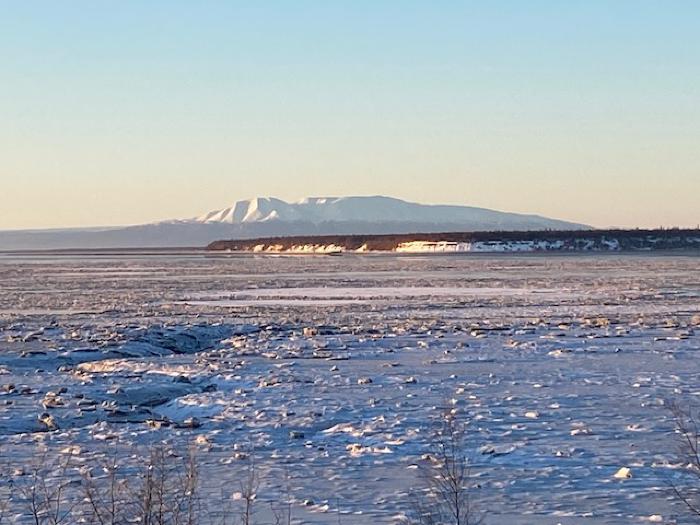Cook Inlet — Cungaciq

Cook Inlet is a large marine estuary that stretches 180 miles from the Gulf of Alaska into the mountainous interior of south-central Alaska. This expansive geographic feature is named for British Royal Navy Captain James Cook. Cook explored and mapped Alaska’s Pacific coast in 1778, visiting the inlet in search of the legendary Northwest Passage—a trade route from Europe to Asia across the top of the world.
Cook Inlet is just one of the many names for this body of water. A Russian map from 1826 identifies the inlet at Kenai Bay. An older, Alutiiq word for Cook Inlet is cungaciq, which may be related to the Alutiiq word for blue. Sometimes people on Kodiak call the inlet Kiakeq—the word for a northeasterly wind that comes from the general direction of Cook Inlet.
Cungaciq is a dynamic body of water, known for its extreme tides, fast-moving silty waters, winter sea ice, and prolific marine life. It is also a gateway between two worlds, a place where the coastal world intersects the terrestrial. Archaeological data suggest that both Alutiiq and Athapaskan ancestors have inhabited its shores for millennia. Alutiiq people live on the eastern coast of the inlet. Their village lies on the embayed shoreline at the tip of the Kenai Peninsula and in Kachemak Bay, as well as the banks of the salmon-rich Kenai River. Neighboring Athabaskan people have long settled the western and northern shores of the Inlet including—Knik Arm and Turnagain Arm. Today, this region is in the traditional homeland of the Dena’ina Athabascan.
